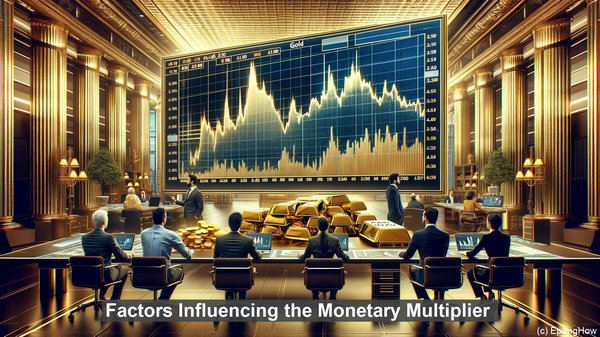Introduction: The Dynamics of Economic Multipliers
Before diving into the specifics, let’s grasp the essence of economic multipliers. In simple terms, they represent the amplification effect of an initial economic shock. When a change occurs in the economy, be it through government spending or monetary actions, it sets off a chain reaction, leading to a more significant impact than the initial input. The fiscal multiplier and monetary multiplier are two such mechanisms, each with its distinct characteristics and consequences.
The Fiscal Multiplier: Government’s Spending Power
The fiscal multiplier primarily revolves around government expenditure. When the government injects funds into the economy, it triggers a series of transactions. The initial spending leads to increased income for individuals and businesses. As a result, these entities have more money to spend, which, in turn, boosts demand. This surge in demand prompts businesses to produce more, leading to job creation and further income generation. The cycle continues, with each round of spending creating a ripple effect. The fiscal multiplier is often associated with infrastructure projects, welfare programs, and other government initiatives.
Factors Influencing the Fiscal Multiplier
While the fiscal multiplier can be a potent tool for economic growth, its magnitude is not fixed. Several factors come into play, shaping its impact. One crucial aspect is the marginal propensity to consume (MPC). If individuals have a high MPC, meaning they tend to spend a significant portion of their income, the fiscal multiplier is likely to be more substantial. Additionally, the composition of government spending matters. For instance, investments in sectors with high linkages, such as construction, can have a more pronounced multiplier effect compared to other areas. The timing of the spending is also crucial. During a recession, when the economy is operating below capacity, the fiscal multiplier tends to be higher.
The Monetary Multiplier: Central Bank’s Influence
While the fiscal multiplier focuses on government actions, the monetary multiplier centers around the central bank’s role. At its core, the monetary multiplier deals with the expansion of the money supply. When the central bank injects funds into the banking system, it sets off a chain of lending. Banks, in turn, use these funds to provide loans to individuals and businesses. These loans, once spent, become deposits in other banks, which can then be lent out again. This process continues, with each round of lending creating new deposits and expanding the money supply. The monetary multiplier is often associated with interest rate adjustments and open market operations.

Factors Influencing the Monetary Multiplier
Similar to the fiscal multiplier, the magnitude of the monetary multiplier is not fixed. It is influenced by various factors. One critical aspect is the reserve requirement set by the central bank. If the reserve requirement is low, banks have more funds available for lending, leading to a higher multiplier. Conversely, a higher reserve requirement limits the lending capacity and reduces the multiplier. The demand for loans also plays a role. If there is low demand for credit, the multiplier’s impact may be muted. Furthermore, the velocity of money, or the rate at which money circulates in the economy, can affect the multiplier’s magnitude.
Comparing the Implications: Fiscal vs. Monetary Multiplier
While both the fiscal multiplier and monetary multiplier aim to stimulate the economy, they have distinct implications. The fiscal multiplier, through its focus on government spending, can have a direct impact on job creation and income generation. It is often seen as a tool for addressing demand-side issues. On the other hand, the monetary multiplier, by influencing the money supply, can affect interest rates and financial conditions. It is often viewed as a tool for managing inflation and ensuring price stability. Moreover, the fiscal multiplier’s effects are more visible in the short run, while the monetary multiplier’s impact may be more pronounced in the long run.
Policy Considerations: When to Use Which Multiplier?
Determining whether to employ the fiscal multiplier or monetary multiplier depends on the prevailing economic conditions and policy goals. During a recession, when there is a need to boost aggregate demand quickly, the fiscal multiplier can be an effective tool. By increasing government spending, it can stimulate the economy and create jobs. However, if the goal is to manage inflation or address financial market issues, the monetary multiplier may be more suitable. It allows for more targeted interventions, such as adjusting interest rates or liquidity measures. In some cases, a combination of both multipliers, known as a ‘balanced policy mix,’ may be employed to achieve desired outcomes.

